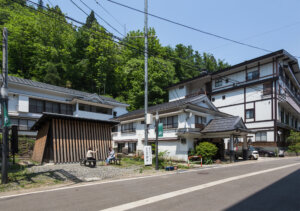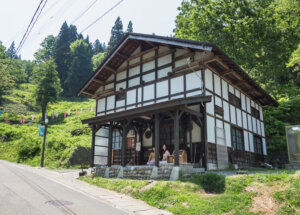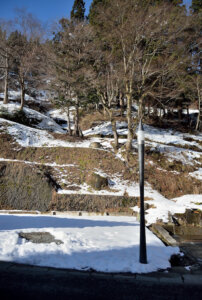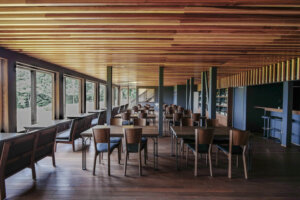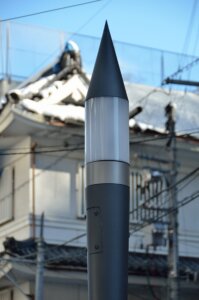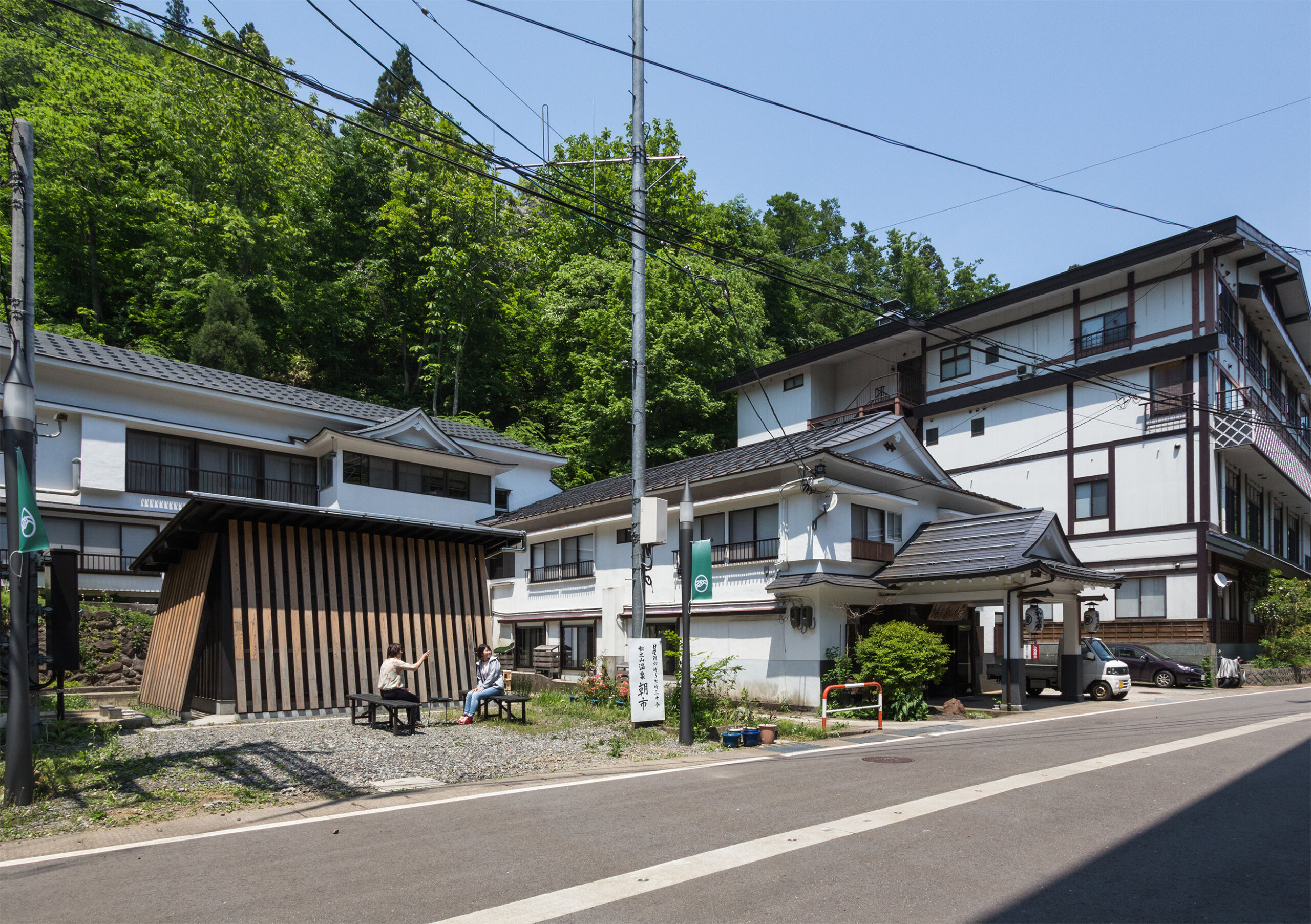
Connecting Architecture, Civil Engineering, and Energy
Matsunoyama Onsen Project
Matsunoyama Onsen in Tokamachi, Niigata Prefecture is one of the snowiest regions in Japan. Life here is a constant battle with snow, as the heavy snowfall robs the town of its vibrancy and tranquility. Any superficial elements created in external spaces are quickly covered by snow. In such a place, there was little room to contemplate aspects like “scenery” and the town’s aesthetics.
Utilizing the unique energy source of the hot springs in this area, the project aims to create a seamless connection between civil engineering and architecture while living in harmony with the snow. The goal is to build a townscape that hadn’t been possible in this region before. By reevaluating the value of battling the snow, the project strengthens the identity of this area. It remained acutely aware of these factors throughout the project.
Town planning is an ongoing process, and this project continues to evolve. The project aims to translate the wisdom of living in a snowy region into new designs and townscapes, one step at a time.

HISTORY
Hot Springs at 98°C and 3 Meters of Snow
The Matsunoyama Onsen, which naturally gushes forth at a scalding temperature of 98°C, is located in a snow-covered region referred to as “the isolated island on land” until the 1960s when towns were connected by tunnels. During the summer, it attracted a large number of visitors for hot spring treatments, but in the winter, when transportation came to a halt, residents had to struggle to survive by consuming the summer’s earnings. In such challenging conditions, considerations like landscape aesthetics were understandably not a priority for local residents; their primary concern was to clear away the snow in front of their homes. However, it was this very challenge that contributed to the continued existence of a unique way of life and culinary culture in harmony with the local natural environment.

LOCATION
Geological Layers Containing Seawater and Mudstone
Matsunoyama’s geological layers are the result of repeated volcanic activities. These layers had once been submerged in seawater and had then risen to become landforms due to geological processes. The geological strata at Matsunoyama Onsen contain seawater, and the fossilized seawater is drawn out as hot spring water through geo-pressure. These layers consist mainly of mudstone and contribute to the gentle, well-drained agricultural landscape of Matsunoyama. Nonetheless, the prevalence of mudstone makes the area susceptible to landslides.
DETAIL
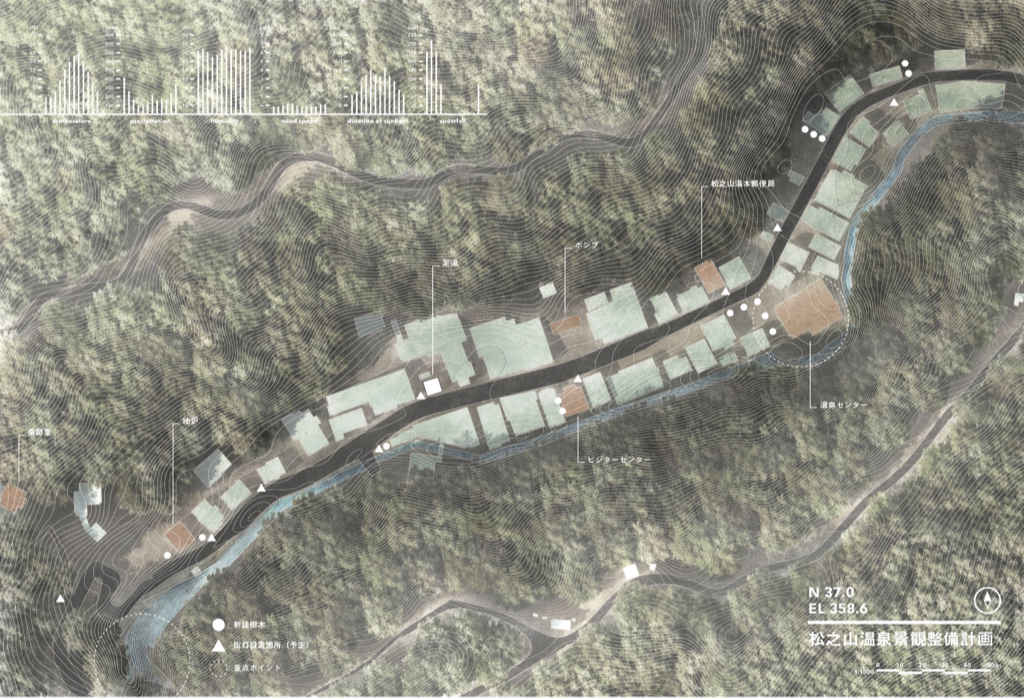
PLANNING
From Struggling with Snow to Coexistence
The region is part of the “Snow Country Tourism Zone,” which is a collaborative effort between the public and private sectors to promote tourism and town planning that leverages the area’s unique characteristics. Living in this area has always involved dealing with heavy snowfall, even during typical years, with accumulations often reaching 3 to 4 meters. Matsunoyama Onsen boasts abundant hot spring resources and has been the site of an experimental project for geothermal binary power generation since 2010, led by the Ministry of the Environment. As part of this project, a system to remove snow from roads was introduced between 2014 and 2015. The system utilizes water at a temperature of approximately 40°C, which is the working medium for geothermal binary power generation, to perform heat exchange with river water, allowing it to melt snow during the winter.
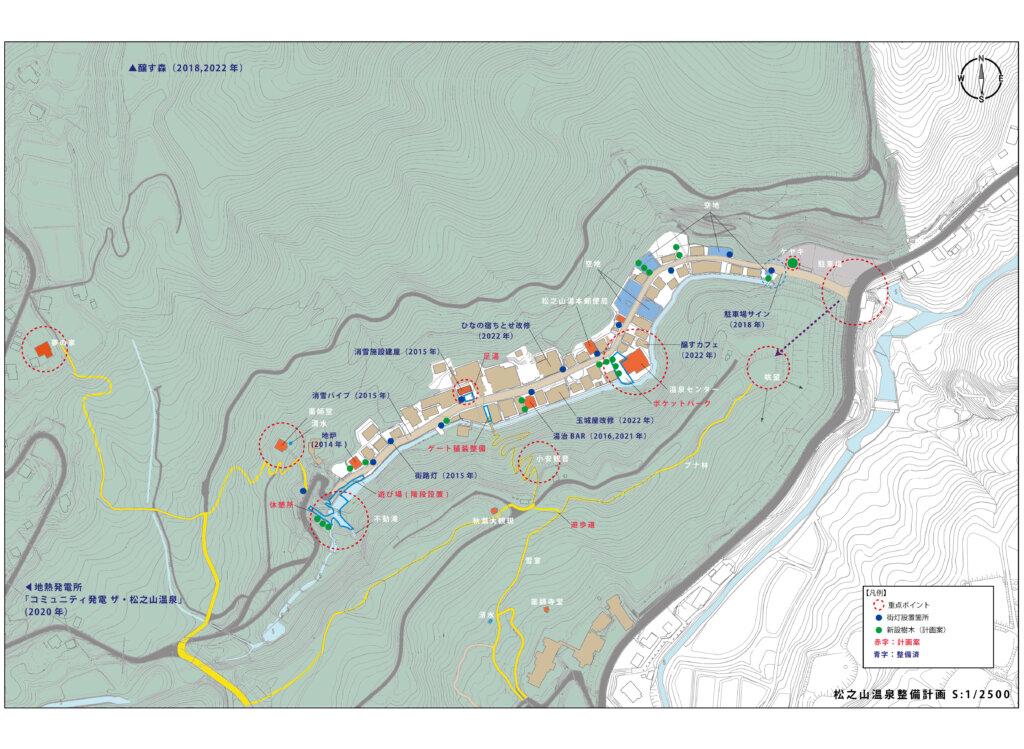
VISION MAKING
Implementing the Grand Vision Step by Step
From 2013 to 2014, we held a series of workshops with the people of the hot spring resort. We discussed the future of Matsunoyama and how the spa town should be, and in 2014 we compiled them into the Matsunoyama Onsen Grand Vision. Since then, the plans have been put into action one by one. By sharing the vision with all the people in the hot spring resort, we are able to move forward with the plan based on a solid sense of values

Workshops
Creating a Vision through Dialogue
The workshops explored topics such as how the unique qualities of Matsunoyama’s snow would affect structures, how daily life would change with the introduction of snow-melting pipes, and what new values could be generated.
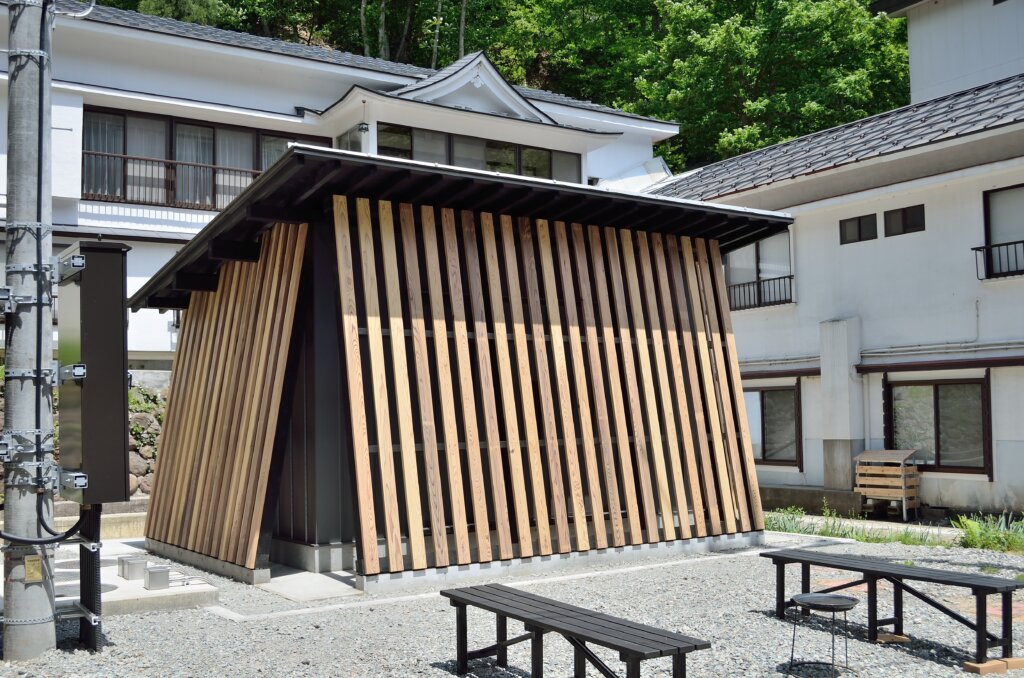
Snow Removal Facility Building
Snow Protection Using Echigo Sugi
This building houses the machinery for the snow removal system on the roads. The use of Echigo Sugi scaffolding boards is inspired by the local practice of “yuki-gakoi” (snow protection), showcasing a design specific to snowy regions.
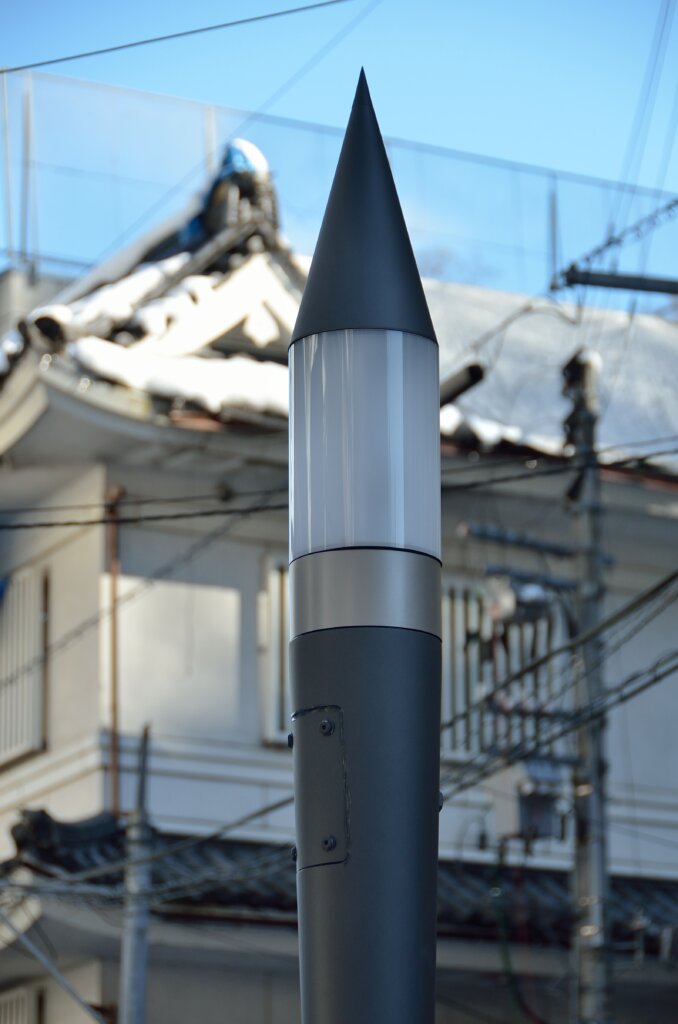
Streetlights
Preventing Snow Accumulation
To prevent snow accumulation on the streetlights during heavy snowfall, a cone-shaped design is implemented at the top. The poles are made thicker overall, considering the horizontal snow load, while creating a sharp, slender impression in the center.
- LOCATION Tokamachi-shi, Niigata, JAPAN
-
PLANNER, ARCHITECTS
Ashida Architecture & Associates
Masato Ashida, GaKin Cyo - ART DIRECTOR N37
-
STURUCTURE DESIGN
Ryoma Murata Building Studio
(Snow Removal Facility Building) -
BUILDER
松里建設・高橋組
(Snow Removal Facility Building) -
BUILDER
志賀電設
山田照明・ヨシモトポール
(Streetlights)
The topographic images are created using 3D Kashmir http://www.kashmir3d.com/.


